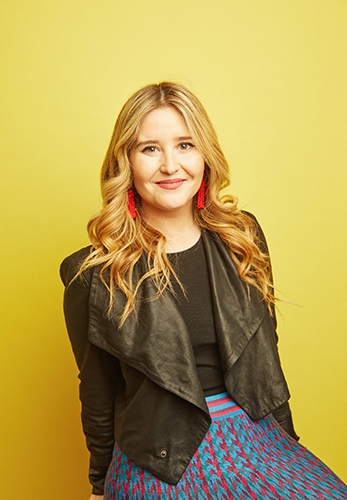Augmented reality is now ready to bring digital into real world applications and solving business challenges
AR is enabling a new information-delivery paradigm and one of the biggest technology trends in marketing now. AR also provides enterprises with an opportunity to solve issues or improve in a number of areas from product design and development, training and the management resources across the value chain.
Consumers can model a wide range of products without a company needing to stock a large physical inventory. Brands and products can be scanned, viewed and virtually augmented to make previously static elements more dynamic. More importantly, AR, when used interactively, can help marketers measure engagement.
With more than 250 million people already engaging with AR on Snapchat every day, Snap is entering the enterprise space with the launch AR Enterprise Services (ARES) and packaging together some of its biggest tools for organisations to integrate into their own websites.
MartechAsia talks to Carolina Arguelles Navas, Head of AR Enterprise Product Strategy and Product Marketing at Snap, to find out how Snap is innovating in AR, why AR is taking off for enterprises and changing the dynamic between brands and consumers.
AR/VR has in the past faced challenges in scaling to larger audiences and its impact has also been difficult to measure. What has since changed for AR to become a driver for enterprise growth?
Innovative technologies like AR have evolved rapidly and transformed the way we interact with people and the world around us – bringing a new immersive element to our experiences. While historically adoption and proven results for AR were limited, that has completely changed over the last few years with the advancements in the quality of technology solutions, democratization of access to new tools and services, and proven results for how it meaningfully drives results such as purchases and reduction in returns for retail. It is estimated that by 2025, around 75% of people across the world and nearly everyone with a smartphone will be frequent AR users. And on Snapchat we are already seeing AR adoption on a massive scale with 250 million people engaging with AR over 6 billion times per day.
Today, AR is an effective business tool across a number of different industries including retail. With AR Enterprise Services (ARES), our new Software-as-a-Service business, we’re bringing our AR technology suite beyond Snapchat, and into customers’ owned-and-operated apps and websites, to transform the way they engage with consumers and drive business results.

ARES’ first solution – “Shopping Suite” – brings together our AR technology and AI-generated fit & sizing recommendations into a cohesive service, helping retailers improve brand loyalty, increase conversions, and decrease expensive and environmentally harmful product return rates. Shopping Suite supports multiple verticals – fashion, apparel, and accessories – and includes five elements that make the online shopping offering more fun, immersive, personalized, and useful.
Is AR just a bridge between the virtual and the real (physical) world or more than that?
AR is more than bridging computing and the real (physical) world, it is ushering in a new era of experience – unlocking entirely new ways to have fun, learn, shop, travel, and more. We have seen the evolution of AR from a powerful tool to transform the way people express themselves and have fun, to true utility for both consumers and businesses.
New types of experiences are now available that were never before possible. For shopping, AR is allowing people to virtually try-on products before buying them, experience step by step tutorials on how to use or apply a product such as makeup, and even walking through a virtual store with your friends each from your own living room. Our introduction of ARES, for example, brings AR directly into our customers’ platforms so that they can engage with their customers beyond Snapchat.
How are your customers using AR to increase their audience engagement and sales? How much have their conversion rates improved? Will Snap be able to share some examples?
Customers have been using ARES’ first offering, Shopping Suite to improve customer experiences and their bottom line. Shopping Suite has several components, such as 3D Viewer, which allows shoppers to see every detail and angle of the item they want in 3D,AR Try-On, which lets shoppers see how a product looks on them and Fit Finder, which helps shoppers figure out the size they should be buying. Our Enterprise Manager tool helps enterprise companies integrate these technologies into their own platforms.
When it comes to brand and product selection, AR provides context to shoppers, along with the confidence that they’re making the right choice. That’s why 66% of shoppers who use AR are less likely to return their purchases. Based on the exponential growth e-commerce has seen in the past couple of years, this could be a game changer for an industry currently grappling with higher returns.
Additionally, we’ve seen early validation from our customers like Goodr and Princess Polly. Eyewear company Goodr is already seeing an 81% uplift in add-to-cart and 67% uplift in conversion, we have apparel retailers like Princess Polly, that are seeing a 24% lower product return rate by integrating solutions like Fit Finder and AR Try-On.
Do you see AR playing a key role in new digital advertising models, for example in commerce and retail media? What is Snap doing that is innovative in this space?
AR has become a powerful tool in marketing — across industries, brands are recognizing the power and capabilities of AR Lenses, harnessing the power of the technology to offer current and potential customers a way to enhance the world around them.
Snap pioneered AR advertising – ushering in this new era of marketing since 2015. We’ve seen thousands of brands leverage AR to drive their marketing goals – from upper funnel awareness and engagement to lower funnel impact on purchases.
Ads featuring AR provide utility and help brands build deeper connections with consumers. Marketers can leverage this to differentiate their brand when it matters most. AR ads play a unique role in each phase of the purchase journey — marketers should not view AR as an add-on, but rather as an always-on tool to build and amplify brand messaging.
We help businesses build both for their own retail apps and websites, and for the Snapchat platform as well, allowing them to get in front of the unique Snapchatter audience.
Do you see consumers playing a more interactive role as ‘co-creators’ in the development of products that they buy?
AR delivers the most personalized experience possible by recentering shopping around the shopper rather than the item, and that is what makes it invaluable. AR offers consumers the opportunity to create the experience that they want. Over 250 million Snapchat users engage with our AR features on a daily basis and more than one in three global shoppers expect AR to be available now when shopping for items such as clothes, beauty, furniture, luxury, and cars, with two in five consumers expecting AR to be available in the coming year. Given that 80% of consumers expect companies to deliver personalized interactions, meeting these expectations is not a nice-to-have – it is a must-have.
The opportunity for AR to solve existing challenges such as shopper confidence, returns, and facilitating advice from friends is clear today. But this is just the beginning. AR will open new opportunities for the future of fashion, self-expression, and creativity – allowing shoppers to make items truly their own, and in future, burgeoning industries such as digital fashion will mark a new era of creativity and business growth.


















